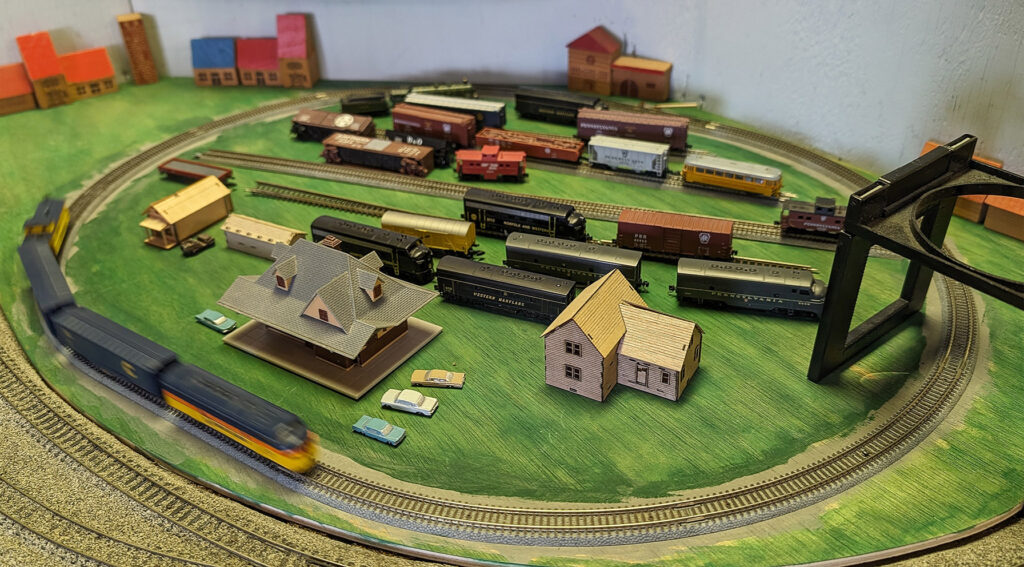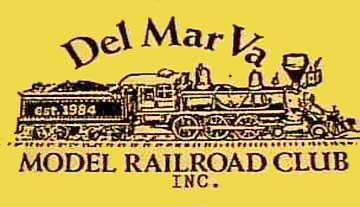
Located on one of the N-scale corner modules is a more compact layout, the club’s smallest, Z-scale. When it was introduced in 1972, the last letter of the alphabet was selected for the name of the scale with the expectation that no smaller scale would be created. The scale is 1:220, and the gauge (the width between the rails) is 6.5 mm. By comparison, the N-scale ratio is 1:160 and the gauge is 9 mm. The length of a 40-foot boxcar is 3 inches in N-scale and 2.2 inches in Z-scale.
Z-scale is one of the smallest commercially available model railroads in the United States. Despite its size, the details of Z-scale models have a very realistic look. A magnifying glass is on hand to provide verification.
The track oval measures a gigantic 16″ x 20″. This is roughly equivalent to 0.2 miles. The track is connected to a power pack that converts AC electric current to DC current with a maximum of 10 volts. Like the power on the N-modular layout, speed is regulated by changing the voltage, the flow of electricity to the rails, and the direction of travel is changed by reversing the polarity.
Like the larger scales, Z-scale has steam and diesel locomotives, streetcars, and freight and passenger cars in a wide variety of road names. A small sample is displayed at the model railroad club.
